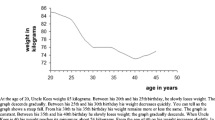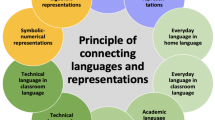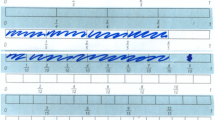Abstract
The research project partly presented in this paper aims at investigating the potential of the design of learning environments based on research to enhance language for mathematics learning in order to foster conceptual and language development. In this paper I present a collaboratively designed learning environment on angles, with a focus on enhancing classroom discourse to adapt to the conceptual development of most students in 6th grade. The theoretical background of the research combines Vygotskian and Bakhtinian points of view on language, and relies on the idea of a secondarising process of discourse. An empirical investigation of the enacted learning environment revealed its potential to enhance classroom discourse and students’ conceptual and language development by introducing an explicit distinction between empirical and theoretical aspects of measurement concepts. The findings include the identification of conditions and limitations to be addressed in the design and instructional practices of mathematics- and language-integrated interventions, in general, and for the next steps of the current project.









Similar content being viewed by others
Notes
This happens for different reasons, including their home language not being the same as the school language or because of their socio-economic status.
Author of this paper.
TXM was developed at the University of Lyon. https://sourceforge.net/projects/textometrie.
We interpret this ‘no’ as meaning ‘it is the contrary’, as the use of ‘but’ indicates, and the fact that he answered ‘yes and no’.
References
Adler, J. (1997). A participatory-inquiry approach and the mediation of mathematical knowledge in a multilingual classroom. Educational Studies in Mathematics, 33, 235–258.
Adler, J. (1999). The dilemma of transparency: Seeing and seeing through talk in the mathematics classroom. Journal for Research in Mathematics Education, 30(1), 47–64.
Bakhtin, M. M. (1981). In M. Holquist (Ed.), The dialogic imagination: Four essays (C. Emerson & M. Holquist, Trans.). University of Texas Press.
Barwell, R. (2016). Formal and informal mathematical discourses: Bakhtin and Vygotsky, dialogue and dialectic. Educational Studies in Mathematics, 92, 331–345.
Barwell, R., Ingram, J., Prediger, S., & Planas, N. (2018). ETC4 Panel—Opportunities and challenges of classroom-based research on mathematics and language. In N. Planas & M. Schütte, (Eds.), Proceedings of the fourth ERME topic conference ‘classroom-based research on mathematics and language’ (pp. 17–25). Technical University of Dresden/ERME.
Barwell, R., & Pimm, D. (2016). Bakhtin and some dilemmas of mathematics—Language. In M. Phakeng & S. Lerman (Eds.), Mathematics education in a context of inequity, poverty and language diversity (pp. 7–18). Springer.
Bernié, J.-P. (2002). L’approche des pratiques langagières scolaires à travers la notion de «communauté discursive»: un apport à la didactique comparée? [Approaching school language practices through the notion of “discursive community”: enriching compared didactic?]. Revue Française de Pédagogie, 41, 77–88.
Chesnais, A. (2012). L’enseignement de la symétrie orthogonale en sixième: des contraintes, des ressources et des choix [Teaching orthogonal symmetry in 6th grade: Constraints, resources and choices]. Recherches en didactique des mathématiques, 32(2), 229–278.
Chesnais, A. (2018). Diversity of teachers’ language in mathematics classrooms about line symmetry and potential impact on students’ learning. In N. Planas, & M. Schütte (Eds.), ETC 4 : fourth ERME Topic Conference ‘Classroom-based research on mathematics and language’ (pp. 41–48). ERME. http://www.mathematik.uni-dortmund.de/~prediger/ERME/18-ETC4_Proceedings-Complete.pdf.
Chesnais, A., & Constantin, C. (2020). Developing new discourses to deepen students’ conceptual understanding in mathematics. In Communication at the 7th ETC ‘Language in the Mathematics Classroom’ (Montpellier, February, 18th–21th).
Chesnais, A., & Munier, V. (2016). Mesure, mesurage et incertitudes: une problématique inter-didactique mathématiques/physique. In A.-C. Mathe & E. Mounier (Eds.), Actes du séminaire national de didactique des mathématiques (pp. 212–237). IREM de Paris.
Chesnais, A., & Munier, V. (2021). Differentiating empirical and theoretical measures in mathematics and physics: A powerful idea for learning, teaching and researching (submitted).
Coulange, L., & Train, G. (2020). School mathematical discursive community: The diversity and the role of language for meaning making. Communication at the 7th ETC “Language in the Mathematics Classroom” (Montpellier, February, 18–21th).
Erath, K., Ingram, J., Moschkovich, J., & Prediger, S. (2021). Designing and enacting instruction that enhances language for mathematics learning. ZDM Mathematics Education, 53(2), in this issue.
Fishbein, E. (1993). The theory of figural concepts. Educational Studies in Mathematics, 24(2), 139–162.
Hanna, G. (2000). Proof, explanation and exploration: An overview. Educational Studies in Mathematics, 44(1–2), 5–23.
Houdement, C. (2007). Geometrical working space, a tool for comparison. Proceedings CERME, 5, 972–981.
Houdement, C., & Kuzniak, A. (2000). Formation des maîtres et paradigmes géométriques [Teachers education and geometrical paradigms]. Recherches en Didactique des Mathématiques, 20(1), 89–116.
Jaubert, M. (2007). Langage et construction de savoirs à l’école: un exemple en sciences [Language and knowledge construction in school: an example about sciences]. PUB.
Jaubert, M., & Rebière, M., (2012). Communautés discursives disciplinaires scolaires et construction de savoirs: l’hypothèse énonciative [School disciplinary discursive communities and knowledge construction: the hypothesis of enunciation] (with the collaboration of J.-P. Bernié). Forum lecture.ch, 2012–3. https://www.forumlecture.ch/archiv.cfm?issue=3&year=2012#.
Lebesgue, H. (1966). Measure and the integral. Translated and edited with a bibliographical essay by Kenneth O. May. San Francisco: Holden-Day, Inc.
Lhoste, Y., Boironv, V., Jaubert, M., Orange C., Rebière, M. (2011). Le récit: un outil pour prendre en compte le temps et l’espace et construire des savoirs en sciences? [The narration: A tool for taking time and space into account and constructing scientific knowledge?] Recherches en didactique des sciences et des technologies, 4, 57–82.
Moschkovich, J. (2010). Language(s) and learning mathematics: Resources, challenges, and issues for research. In J. Moschkovich (Ed.), Language and mathematics education. Multiple perspectives and directions for research (pp. 1–28). Information Age.
Parzysz, B. (1988). “Knowing” vs “seeing”. Problems of the plane representation of space geometry figures. Educational Studies in Mathematics, 19(1), 79–92.
Perdijon, J. (2012). La mesure, histoire, sciences et technique. Vuibert.
Pimm, D. (1987). Speaking mathematically: Communication in mathematics classrooms. Routledge & Kegan Paul.
Pimm, D. (2004). Discourse analysis and mathematics education: An anniversary of sorts. Paper presented at the ICME-10 Conference, Copenhagen, Denmark, 2004, July 4–10.
Pöhler, B., & Prediger, S. (2015). Intertwining lexical and conceptual learning trajectories—A design research study on dual macro-scaffolding towards percentages. Eurasia Journal of Mathematics, Science & Technology Education, 11(6), 1697–1722. https://doi.org/10.12973/eurasia.2015.1497a
Prediger, S. (2019). Investigating and promoting teachers’ expertise for language-responsive mathematics teaching. Mathematics Education Research Journal, 31, 367–392.
Prediger, S., & Şahin-Gür, D. (2020). Eleventh graders’ increasingly elaborate language use for dis-entangling amount and change—A case study on the epistemic role of syntactical language complexity. Journal für Mathematikdidaktik, 41(1), 43–79. https://doi.org/10.1007/s13138-019-00155-x
Prediger, S., & Wessel, L. (2013). Fostering German language learners’ constructions of meanings for fractions—Design and effects of a language- and mathematics-integrated intervention. Mathematics Education Research Journal, 25(3), 435–456. https://doi.org/10.1007/s13394-013-0079-2
Prediger, S., & Zindel, C. (2017). School academic language demands for understanding functional relationships: A design research project on the role of language in reading and learning. EURASIA Journal of Mathematics, Science and Technology Education, 13(7b), 4157–4188.
Radford, L., & Barwell, R. (2016). Language in mathematics education research. Second handbook of PME (pp. 275–313). Sense.
Schleppegrell, M. J. (2010). Language in mathematics teaching and learning. A research review. In J. Moschkovitch (Ed.), Language and mathematics education (pp. 73–112). Information Age Publishing.
Sfard, A., & Linchevski, L. (1994). The gains and the pitfalls of reification—The case of algebra. Educational Studies in Mathematics, 26, 191–228.
Vergnaud, G. (1998). Towards a cognitive theory of practice. In A. Sierpinska & J. Kilpatrick (Eds.), Mathematics education as a research domain: A search for identity. ICMI Study Book 1 (pp. 227–240). Dordrecht: Kluwer.
Vygotsky, L. S. (1934/1986). Thought and language. Translated and reprinted 1986. MIT Press.
Wood, D., Bruner, J., & Ross, G. (1976). The role of tutoring in problem solving. Journal of Child Psychiatry, 17, 89–100.
Author information
Authors and Affiliations
Corresponding author
Additional information
Publisher's Note
Springer Nature remains neutral with regard to jurisdictional claims in published maps and institutional affiliations.
Appendices
Appendix 1
See Table 6.
Appendix 2: Proportion of the usages of the three locutions by students
Appendix 3: Evolution of the usages of the three locutions in each of the classrooms
Rights and permissions
About this article
Cite this article
Chesnais, A. Enhancing classroom discourse about measure to foster a conceptual understanding of geometrical practices. ZDM Mathematics Education 53, 337–357 (2021). https://doi.org/10.1007/s11858-021-01255-0
Accepted:
Published:
Issue Date:
DOI: https://doi.org/10.1007/s11858-021-01255-0












